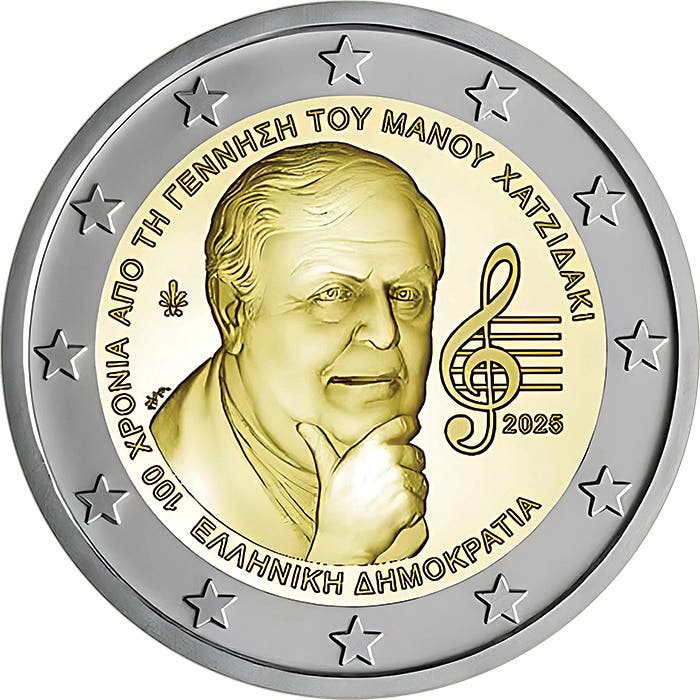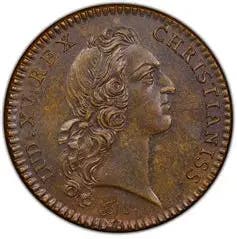Disastrous wars led to coin trickery
By Bob Reis Despite my earlier belief that Swedish copper plate money was not accepted for tax payments, I seem to have discovered that this is not correct. Apparently, one…
By Bob Reis
Despite my earlier belief that Swedish copper plate money was not accepted for tax payments, I seem to have discovered that this is not correct. Apparently, one could pay one’s taxes with copper, but at a discount.
The general idea was that there was an official ratio between copper money (KM) and silver money (SM) that was not 1:1, and that changed from time to time. The important factor was that the official exchange rate was never in accord with market realities, and a critical wrinkle was that the government in day-to-day business paid attention to and participated in the market-based commerce at the edges. You could pay your taxes in copper but at the government rate, which meant you’d pay a penalty because the rate was rigged to favor the government.
This game they played of pretending that they owned the economy when actually the economy owned them precipitated a crisis with the De Gortz dalers, which we will discuss later in this article.
Last time, we discussed Charles XI, who won wars early in his reign, got himself granted absolute power, confiscated a lot of the property of the nobility and began the development of Sweden into a modern nation with a national army, a national bank, and the beginning of public education. He died of cancer in 1697, and his absolute successor was his sole surviving son, Charles, sixth Swedish king of that name but styled XII because of that mythical king list that they still use to number themselves. They know the numbers are not real; must be some kind of joke, eh?
He was 15 at the time. Wikipedia states that there was a “seven month caretaker government,” which I guess means a more or less ad hoc arrangement, not a regency council, but it was only seven months, then there he was, a 15-year-old absolute monarch.
Nothing much happened, it seems, until 1700, when a conspiracy cooked up by Denmark (owned Norway), Poland (condominium with Lithuania and the king was also the elector of Saxony), and Russia culminated in an unprovoked attack on the Swedish territory of Holstein-Gottdorp. That land was a lump of territory south of Denmark. Danes remembered that southern Sweden, called Scania, had been Danish; now Denmark was wedged between Sweden on the west and the south, and it was uncomfortable.
Russia attacked Swedish Livonia, and the situation developed into what is called the Great Northern War, collaterally related to the War of the Spanish Succession being fought by other European nations at the same time. At first Sweden was winning. The teenage king, taking after his father, had both leadership charisma and tactical smarts. Success brought popularity, but then the situation changed. Sweden started losing. Perhaps the king was temperamentally unable to cut a deal; he had to win. He lost most of his army in Russia at the battle of Poltava in 1709 and fled south to the Ottoman Empire, where he got stuck for five years. Then he was kind of kicked out of what is now Turkey and went to Swedish Pomerania, then back to Sweden.
In that extended moment, the anti-Swedish coalition included Denmark, Saxony (and parts of Poland, Sweden remaining in occupation of about half of the territory, with a puppet king in place), Russia, and Great Britain. The response of the 19-year-old Charles XII was to invade Danish Norway. That gambit failed, and he had to retire. He tried again two years later and was shot in the head and died one day in 1718.
All of the Swedish overseas possessions were gone, and there were foreign troops on Swedish soil. As might be expected in a time of national calamity, Sweden was broke. We have mementos of that national penury, the De Gortz dalers. Let’s talk about the coins.
When Charles XII took the reins, the economy was not great, but there was no war. The market for Swedish copper, where most of the operating revenue came from, was not wonderful. You’d think of Sweden as poor, maybe poor with a peace bonus. But then came war, and the expenses got severe. There were taxes and requisitions. Then more of them. They ended up with fiat money and a ruined economy. Along the way, they tried a few different things in attempts to fend off disaster, but nothing worked. As we know from current examples, nations can go on without money for many years. It isn’t easy, but they generally don’t go away because they’re broke; they drag on, and maybe things get better after a while, if they’re lucky and keep their nose clean.
In gold, the main coin was the international standard ducat, struck in most years in small commercial quantities. There were a few 2 ducats struck in 1704 and 1706, for show or presentation, I assume. A few halves and quarters were also made, possibly as proposals for palace use or some such. And there were specials made in 1718, listed in Ahlstrom but not the Standard Catalog of World Coins, supposedly of gold made by an alchemist from lead in 1706. That guy got a contract to make gold for the treasury, failed of course, and was eventually executed. The regular ducats are rare, while the specials are extremely rare, some unique.
In silver, there were riksdalers, supposed to be for international trade. Thalers were fairly standardized in the 17th century, but in the mid-18th century, their intrinsic value was diversifying so that the Swedish version was a bit heavier than the Danish speciedaler, heavier still than the Saxon thaler. Charles XII riksdalers were struck in 1707 (long- and short-hair types), 1713 and 1718. Let’s just call them rare.
The traditional mark coinage for internal use was made in a range of denominations. Crown-sized 8 marks were made only in the early years of the reign and are rare; 4 marks, struck in most years, are slightly less rare. The workhorse silver coin was the 2 mark, struck in all but the last year, as was the considerably less popular 1 mark. That output profile reminds me of the Spanish practice of making far more 2 reales than any other denomination. Lower denominations in billon were the 5, 2, and 1 ores, with the 5 struck in all years, the 2 in two years only near the end, the 1 all but the last, crowned crossed “C”s type, not rare. Rounding out the silver are extremely rare coronation and funeral 2-mark-size medals and some last-year-of-reign inflation coins I’ll get back to.
Round copper, what ordinary people would be spending, was not a favored product at the mint (Avesta; the silver and gold were made in Stockholm). The basic coin was the 1/6 ore, struck in five years (one year the mintage was one) between 1707 and 1716. The Standard Catalog lists a klippe version of the 1707 1/6th ore. It is not in Ahlstrom. They were making all sorts of mint sports in Europe at that time, special medals, klippes, off-metal versions, and so forth.
The real business of the Avesta copper mint was the plate money. They were thinking all kinds of desperate thoughts. They imagined that they’d take enough copper off the market by making it into coins and forcing it on their own people to raise the price. It didn’t work, the scale was wrong, they must have known that, don’t you think? But they did it anyway. And then they jiggered the weights in the wrong direction, which made the situation worse. In the disastrous last year of the reign, they thought about a 50 percent revaluation of the plates, and a few were countermarked with new higher denominations.
It was all for naught. People were being cheated, they knew it, and there was nothing they could do about it.
Charles had always had a strong ally in a high bureaucrat in the Swedish possession of Holstein-Gottdorp, that irritating territory blocking Denmark’s land route to Germany. Wikipedia names him Heinrich von Gortz; we numismatists follow the French style preferred by 18th century cultured Swedes and refer to a Baron de Gortz. When the king returned from exile in Turkey in 1714, de Gortz was the first to meet him. He was made chief minister.
The situation was dire: war and no money. De Gortz’ approach was to grind the people more. The mechanism was the “de Gortz” dalers. Think about it. You live in a world where money is supposed to be real, and you see some of that real silver money from time to time, but it’s always someone else who has it. You’re lugging around these big lumps of copper that you can’t get what they say they’re worth when you spend them. Now it’s 1715, there are these pretty little copper things with nice pictures, the size of a 1/6 ore, that claim to be dalers. They are supposed to be convertible into the other kinds of real money, but nobody has any of that stuff.
And there were so many around that, if you flipped it up into the air, it lost value by the time it hit the ground. I’m kidding. No, I’m not. Look at the current availability of those things. They were the only money around for a few years, and then at the end they became worthless, like Confederate paper money.
One more desperate measure was the brief issue of debased large silver coins, the caroliners, in the last year of the reign. The 2 caroliner was bigger than the 4 mark but had about two-thirds of the silver content, that fact broadcast, I suppose, by the billon-style crossed “Cs” type. This would have been a direct raid on the purses of a favored class of mid-level big shots, but it didn’t have legs.
In all, there were seven different separate monetary systems in play during the reign: gold, riksdalers, marks and ores, round copper, plate money, de Gortz dalers and caroliners – a recipe for chaos! Forget about the official silver money and copper money designations. Those were just official jokes. There weren’t any silver coins floating around calling themselves copper money.
Availability snapshot: though I found a ducat (“details,” asking more than $5,000), most of what’s out there is a few 1 and 5 ores, some nice; a few 1/6th ores; a few 2 and 4 marks; a caroliner. But really, its about 98 percent de Gortz dalers.
Charles XII died unmarried and childless. His sister, Ulrika Eleonora, declared herself monarch, a big surprise to the council, which essentially said, “Um, OK.” Then the riksdag said, basically, “Hey, wait a minute, you want to do that, you gotta give up the absolutism and we’ll have a constitution,” and she agreed.
Her first act as “queen regnant” was to remove Baron de Gortz as chief minister and to end his financial, what would we call them other than shenanigans? There was a kangaroo court trial, and he was executed. But there was still a war on with Russia. The finances were a mess. It turned out that Ulrika Eleonora did not have a flair for either the detailed analysis or the schmoozing necessary for the conduct of political administration. It became the general idea of all that she might abdicate in favor of her (everyone seemed to think) more comprehensively capable husband, Frederick of Hesse-Cassel, and that event came to pass in 1720.
Her coinage comprised a normal-for -the-times panoply of gold and silver portrait coins and crowned initials billons, all made in very small quantities, rare and very rare. And plate money, lots of it, but almost all were melted. There was a large issue of 1 ore coins (KM), the size of the old 1/6th ores, in 1719, overstruck on de Gortz dalers, which are fairly common, I had one once, but I wasn’t taking many pictures back then.
Frederick I ruled, or rather, “ruled,” for 31 years. The terms of his constitutional rule gave him not much to do and not much to work with. The Wikipedia article on him is quite short. “Many things happened … but he had nothing to do with most of them.” He tried to participate but they (the riksdag) pretty much ignored him.
Sweden had passed through a period of personal dictatorship, and it had ended badly due to the very personal characteristics of the dictators. Now it would go through a period of completely democratic control, which also ended badly.
The parliamentary regime first attended to business and fixed the economy. Then they inaugurated numerous initiatives that we would today call progressive or liberal, things like transit infrastructure, public works, education, health care, support of the arts, “free” press. But they brought these things about by negotiation. Factions developed. There got to be a group of legislators who frankly hankered after military glory and thought that all of this internal national prosperity was coddling the undeserving, that the country was losing its manliness. Specifically, they wanted to get those lost territories back, particularly from Russia.
In 1740, they cooked up a scheme to depose the Russian monarch, Anna, and to seize the lost territories in Livonia, Estonia and Finland. Anna died all on her own, and her successor, Elizabeth, who had been the Swedish riksdag’s puppet-to-be, said there was no deal. However, the riksdag ordered the troops to proceed. The war lasted three years and was a disaster for Sweden all the way through. The situation was worse at the end, in 1743, than it was at the beginning; big chunks of Finland were gone to Russia, never to return. And, as usual in circumstances of national military disgrace, Sweden was broke.
The war party had some unusual financial situations to explain to the riksdag, in addition to having to listen to everyone tell them what fools they’d been about that disastrous war, but they managed to pull a diplomatic rabbit out of the hat. The new Empress of All the Russias, Elizabeth, agreed to the return of most of the captured Finnish territories on the condition that her cousin, Frederick Adolph of Holstein, would succeed on the death of Frederick I.
It was a deal too good for a country that just lost a war. The war party (nicknamed the Hats, meaning militarists, while the other party was nicknamed the Caps, for nightcaps, like they wanted to sleep in their dream of peace and prosperity) remained in power, grumbling through some years of “inglorious” peace, until the old king passed.
Frederick I seemed to enjoy the trappings of royalty, but then trappings were all he had. Wikipedia declares that he passed his time hunting and dallying with his scandalously official mistress, as well as parties and ceremonies.
It was the fashion of the time to create glorious coins to present to favored persons on auspicious occasions, and here we see the largest Swedish gold coins, some 10 ducats, made either to show his majesty his glorious reflection or for him to present to someone.
The regular Frederick gold – that is, ducats – were made in most of his years in quantities not generally exceeding a few thousand, except for a mintage of 24,000 in 1744, the year they lost that war. (Maybe they had some payments they just couldn’t pay with copper.) They also made half and quarter ducats in a few years, mintages mostly in the hundreds, perhaps for use in palace card games rather than for commerce.
In silver, there were riksdalers struck in most years, 12 types including some commemoratives, some with portraits of his wife, many with mintages of more than 10,000, which I interpret as implying they were intended to circulate. It seems that they were pointing towards retiring the marks. They discontinued the 8 mark, but they continued to make 4, 2, and 1 marks in several years. There was a conversion situation: the riksdaler was not the same as an 8 mark; were they going around giving 6.23 marks for a riksdaler? Odd denomination relationships were not unusual in 18th century Europe.
They made half and quarter riksdalers too, for circulation. Billon 1, 2, and 5 ores were made in most years, some mintages in the hundreds of thousands, and a new denomination, the 10 ore, some with mintages over a million. Round copper denominations were the new 2 ore, 1 ore, and half ore; some were KM, some were SM, I’m not sure they cared, since copper, like the other metals, especially in Sweden, always tended toward discount in commerce.
And there was, as usual, plate money. You might notice that SCWC does not give mintage figures for plate money, nor does Ahlstrom mostly. Why, I’d like to know? Did they, perhaps, not want anyone to find out how much of it was out there?
There are coins of Frederick I to be had. Mintages were generally much larger for the entire reign, a period when the government, ostensibly of, by, and for the people, put money out there to facilitate commerce. There is even plate money to be had, due to the unfortunate loss of the ship Nicobar and its subsequent salvage two centuries later.
This article was originally printed in World Coin News. >> Subscribe today.
More Collecting Resources
• More than 600 issuing locations are represented in the Standard Catalog of World Coins, 1701-1800 .
• The 1800s were a time of change for many, including in coin production. See how coin designs grew during the time period in the Standard Catalog of World Coins, 1801-1900 .









